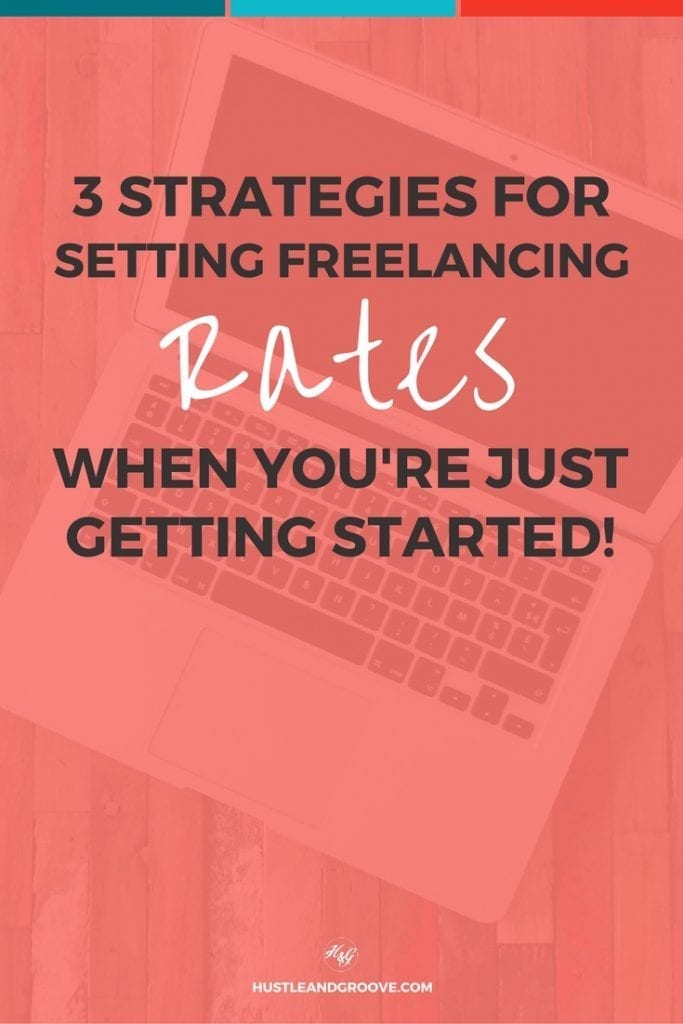The biggest problem with setting freelancing rates is that you've got no idea where to start, particularly if you're new to freelancing. It's hard to set a freelancing rate if you've never had to price your skills before.
But that doesn't mean you should just pick an arbitrary number either. You need to put some thought into it and figure out how to get paid what you're actually worth.
Figuring out your freelancing rate requires a bit of finesse and includes a few things that you might not have thought of.
I know that when I first started out freelancing, I was scared of setting my rate. I'd never had to price my skills before, so I had no idea what was a fair and reasonable amount to charge, not to mention what things should be included in my rate. I felt more than a little intimidated at the prospect.
I was really worried that the price I did set was going to be outside what a client was expecting to pay, or even worse, that I was going to undervalue my skills and be stuck with this rate FOREVER…
So to avoid this happening to you below is a direct excerpt from the OFS Guide “How to Set Freelancing Rates and Get Paid What You're Worth!”
Strategies for Setting Freelancing Rates the Right Way
[feature_box style=”13″ title=”%3A%3A%20Things%20to%20Consider%20When%20Setting%20Your%20Rate” alignment=”center”]
Before we jump into the formula, here is a closer look at some of the things that go into building the formula.
Make sure you know your response to each of these individual things ahead of time, where possible, so you can work out your rate for specific projects.
Length of time it takes to complete a task: Whether you opt to go with an hourly rate or not, you need to know how long it’s going to take you to complete each task associated with a project. In most cases, this is going to be a guesstimate. We’ll talk about this more, but working out what your hourly rate is provides a good baseline to start with when pricing projects for a client. I wouldn’t advise you to tell your client what your hourly rate is, as that can lead to a very big rabbit hole that can be difficult to extricate yourself from. Always quote a project fee only.
Project costs: Do you need to buy supplies or software to complete this project? You might have to buy photos or domain names, so make sure that these are factored into any project fees you quote.
Your overheads: This is things like your internet connection, power usage, rent or mortgage, marketing, insurance, etc. Know what these are for a 12 month period and then work out what portion of this will need to be added to your project fee. This is particularly important if you’re going to be working on a project for longer than a month.
Profit: This is a percentage that you’ll add once you’ve figured everything else out. It reflects your experience and the value you bring to the project.
Market conditions: This is something you will need to factor in; particularly when there’s a lot of demand for your work, you can charge slightly higher rates. If there isn’t a lot of demand, then you’ll need to price your rates accordingly. It’s all about perceived value and demand from your clients perspective.
Tax: You’re going to have to pay tax at some point, so factoring this in now is your best bet to ensure that you don’t get landed with any unexpected tax bills. Consult a local accountant on what tax you’ll be liable for. If you’re still working full-time, you will more than likely offset any tax by claiming expenses on your taxable income, but a qualified accountant will give you the best advice on this. I’m no tax specialist!
[/feature_box]
In the next part, I'm going to talk about the formula I used to work out both my hourly rate and project rate. Once you've worked with this formula a couple of times, you'll get a better ‘feel' for what you should be charging.
[feature_box style=”13″ title=”%3A%3A%20How%20to%20Calculate%20Your%20Rate” alignment=”center”]
The first area of the formula is focused on determining your base rate, which is often referred to as your hourly rate or minimum acceptable rate (MAR).
This is what I used to determine my base rate initially:
Average Hours Worked per Month (x minimum wage + 10%) + Monthly Overheads/Average Hours Worked = Hourly Rate
Once you've worked out this amount, you could use this as your bottom line or MAR. This would be the minimum I would accept for a job, regardless of whether it was hourly or fixed.
Once you’ve identified your base rate, you need to work out the rest of your project rate using this formula:
Base Rate x Approx. Hours to Complete Project + Project Costs + Profit % + Tax = Project fee
Once you’ve got these two formulas ready, it’s time to apply it to some actual jobs. Jump on a site like oDesk or Elance and find some jobs that you could apply for. Using the formula's above, work out what you'd charge as a base rate and what you'd charge as a project rate.
Then, apply for those jobs!
[/feature_box]
If you want to know more about how to apply this in a real-life situation and how to negotiate with clients to ensure you ALWAYS get paid what you're worth, check out the book here:
[images style=”0″ image=”http%3A%2F%2Fhustleandgroove.com%2Fwp-content%2Fuploads%2F2015%2F04%2FOFSbook23d.png” width=”550″ link_url=”http%3A%2F%2Fwww.amazon.com%2Fdp%2FB00SKEFTL8″ new_window=”Y” align=”center” top_margin=”0″ alt_text=”How%20to%20set%20freelancing%20rates” full_width=”Y”]


6 replies to "How To Solve The Biggest Problems With Setting Freelancing Rates"
Thanks for sharing this article. I didn’t have a clue about this formula when I started and I work for a pitiful amount of money in the beginning. It was so small I’m ashamed to even think about it. Setting low rates as a beginner brought me more harm than good, because I immediately located myself in a low paying client market and once you’re stuck there, it’s very hard to move on. Hopefully the tips mentioned here will help our fellows freelancing newbies not to fall in the same trap I did.
Thanks Aleksandra. It’s tough starting out, but once you’ve got some plan around what you should be charging and then how to communicate that to the client, you can get yourself out of the low income hole!
Yes, I totally agree with what you said. I think that it is really hard to give a price especially if new to freelancing. When I was new to freelancing, I am getting a hard time to price my work too. This article is very helpful. Thanks for sharing this article.
You’re so welcome 🙂
Thanks for sharing this article . I am a new freelancer. This article will definitely help me to set a rate for my work. This is really very helpful for me.
Yes, I totally agree with what you said. I think that figuring out your freelancing rate is definitely hard. I think that this article will definitely help me. Thanks for sharing this article. This is a very helpful site. I will definitely return to this site.